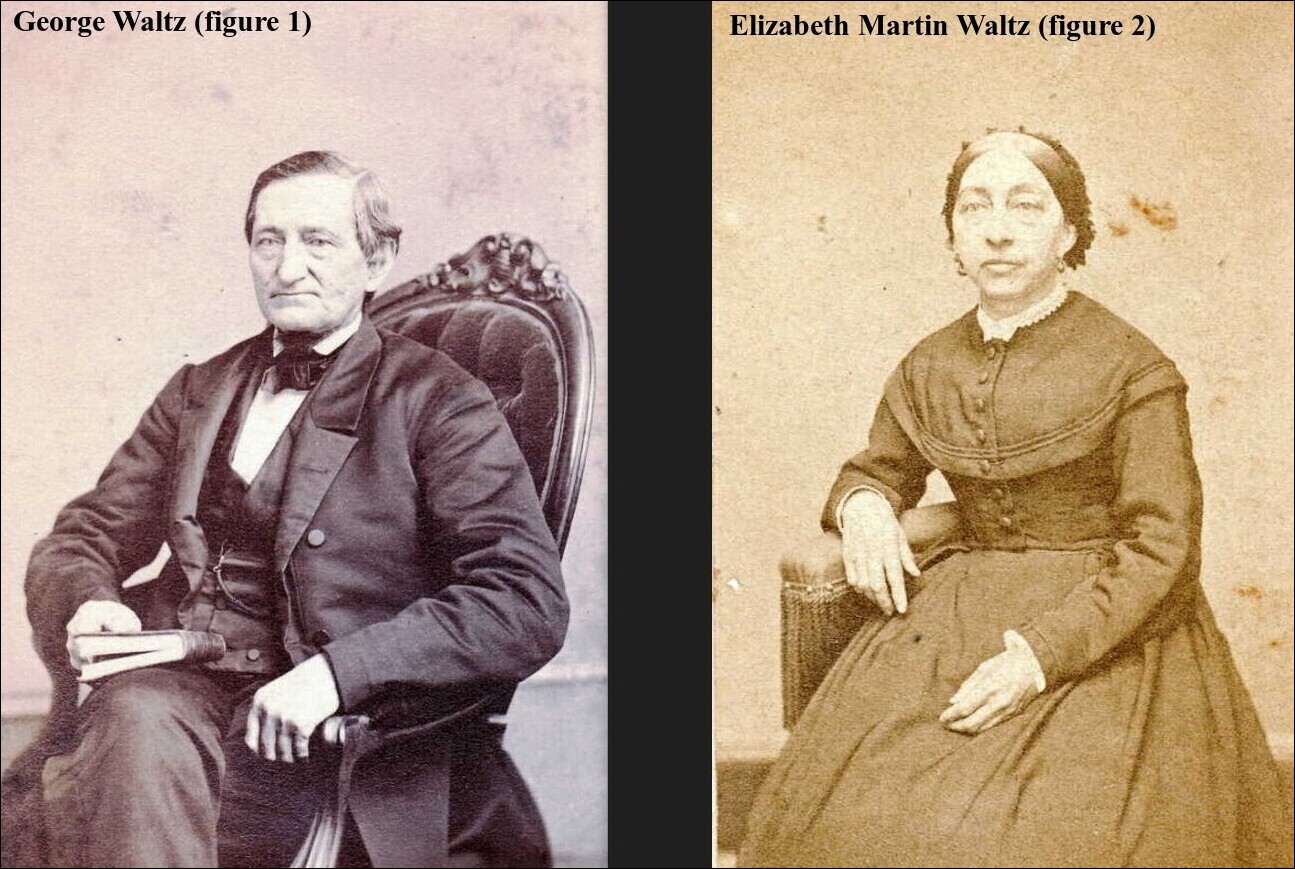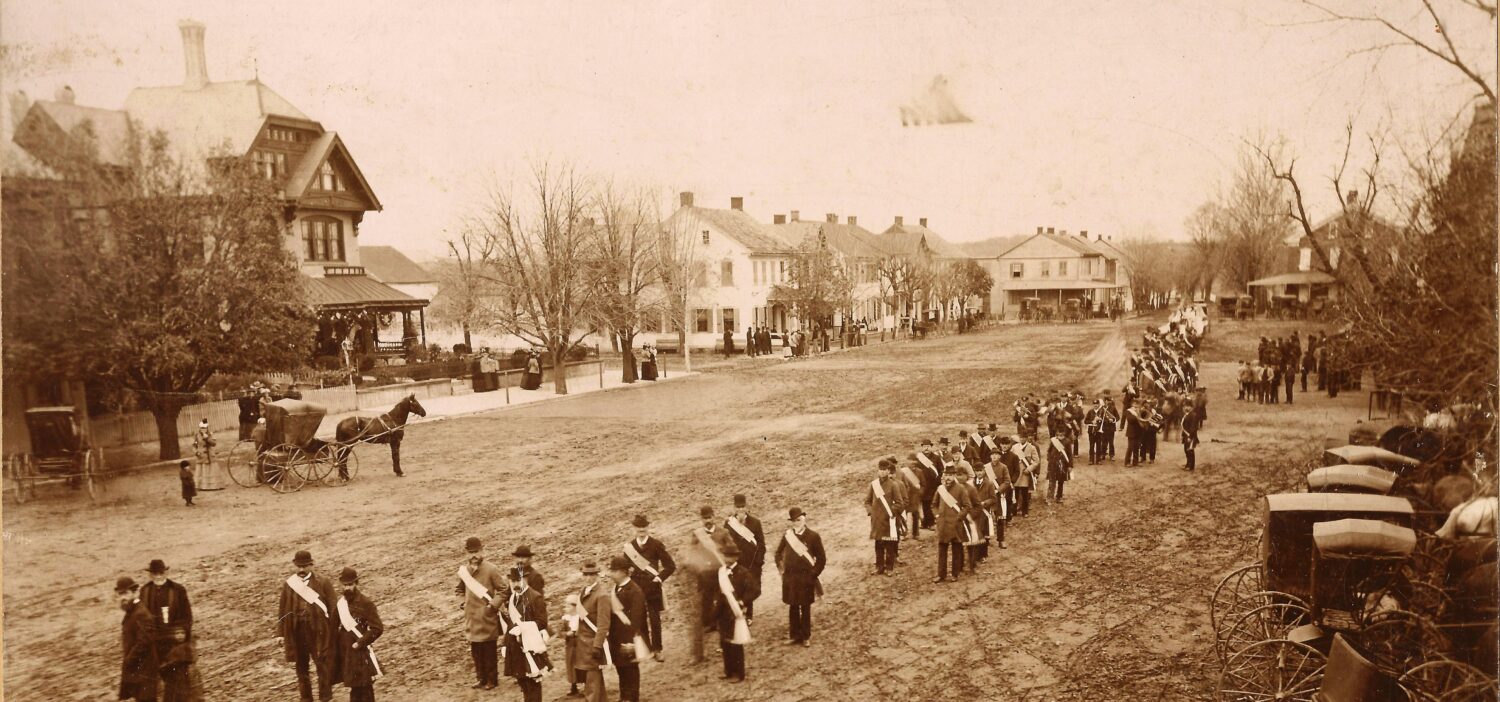The Civil War was one of the most significant historical events of the nineteenth century in the United States. Scholars and historians have long debated this subject since the guns fell silent in 1865. The war changed families all over the country, from newly freed persons of color trying to understand their place in society to veterans returning home on both sides coping with living reminders of the horrors of war. Knowing where Waltz fit into the war experienced by all soldiers, regardless of their uniform, and understanding social conditions during the period will place him into the larger pages of history.
John Henry Waltz, the subject of this research paper, was born on 10 August 1844 in Lebanon, Pennsylvania. He was the only child of George Waltz (see figure 1) and his wife, Elizabeth Martin (see figure 2), both natives of Dauphin County, Pennsylvania (later Lancaster), and after 1813 incorporated into the new county of Lebanon, where his family resided. In the years leading up John’s birth his father George Waltz in 1840 resided in the borough of Lebanon where he was engaged in agricultural pursuits. After his son’s birth in 1844, George Waltz turned away from farming to support his family by selling books. He first worked as a colporteur selling religious books for the American Tract Society in 1845. This business enterprise wasn’t enough to support his family, which had Waltz turn his business attention to include general interest books and stationery.

During the late summer of 1861 at the pinnacle of the armies efforts to fill their rank, John H. Waltz decided to enlist in the United States Army. He was recorded as a native of Lebanon, Pennsylvania when he enlisted as a member of Company A of the 93rd Pennsylvania volunteer infantry on 14 September 1861, in Lebanon, Pennsylvania where he resided. Waltz was officially mustered in seven days later on 21 September 1861. At the time of his enlistment Waltz stated he was 18 years old, resided in Lebanon, Pennsylvania, and worked as clerk in a book store. He measured 5 foot, 7 ½ inches, had dark hair, brown eyes, and was light complexion. His company was commanded by Captain William M. Derr an attorney from Lebanon, Pennsylvania who would be his immediate superior. Captain John B. Embich assumed command of the company after Captain Derr resigned his commission on 22 July 1862.
John H. Waltz served as a private within the command structure of his company after the war began upon his enlistment. The earliest image of Private John H. Waltz photographed in September 1861, after his enlistment shows him seated wearing his issued frock coat. On the table next to him is his cap (called a kepi or forage cap) with the letter “A” denoting his company designation and below the brass design commonly used for foot soldiers called the “infantry horn” (see figure 3).

The 93rd Pennsylvania volunteer infantry was a distinctively organized regiment incorporated in the months following the start of the war between 15 September and 28 October 1861 at Lebanon, Pennsylvania. The regiment was comprised of ten companies lettered A to K and included an independent command of field & staff officers and band to serve for a period of three years. Waltz’s regiment commanded by Colonel John M. McCarter was sent to Camp Coleman (named after the regiment financial benefactor George Dawson Coleman), on the outskirts of Lebanon, Pennsylvania, where the men were taught the rudiments of military training. Waltz’s regiment was first assigned to the 3rd Brigade, of the 1st Division of the 4th Army Corps and commanded by Brigadier General John J. Peck. Later the unit was transferred to the 2nd Brigade in the same division and corps commanded by Brigadier General Albion P. Howe.
Further divisional changes under General Howe designated the 93rd Pennsylvania to be transferred to the newly created 3rd Brigade, in the 3rd Division, now in the 6th Army Corps. Other staff officer changes in the fall of 1862, replaced Colonel Thomas A. Rowley (temporarily in command), who was replaced by senior officer Brigadier General Frank Wheaton. One final change in the brigade structure happened in the beginning of 1864 when the 93rd Pennsylvania moved to the 1st Brigade, of the 2nd Division in the same corps for the remainder of the war.
For Part II when John H. Waltz witnessed fighting for the first time click here.

